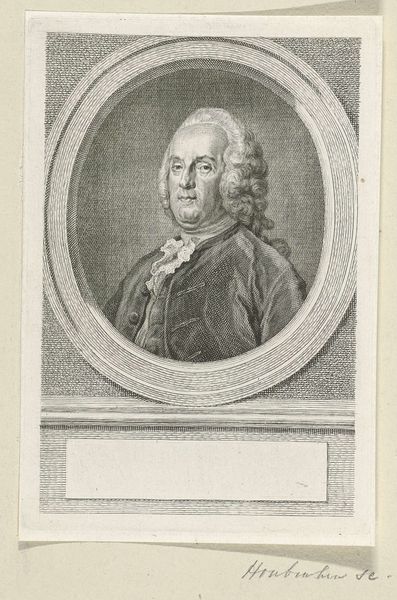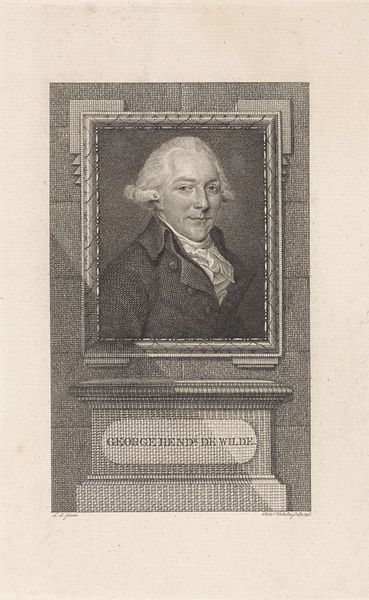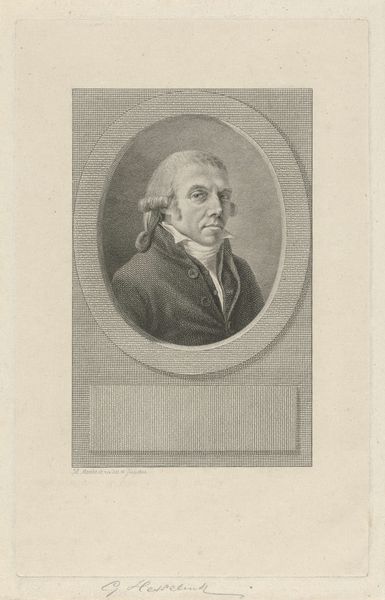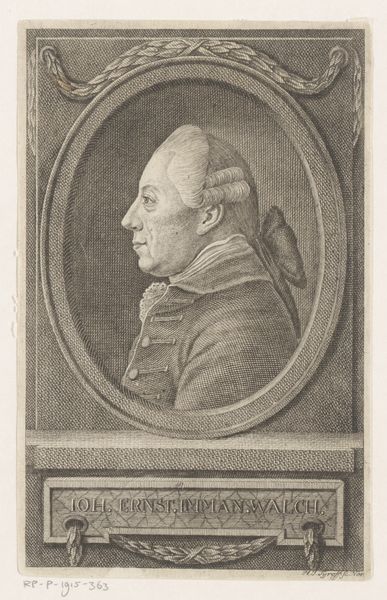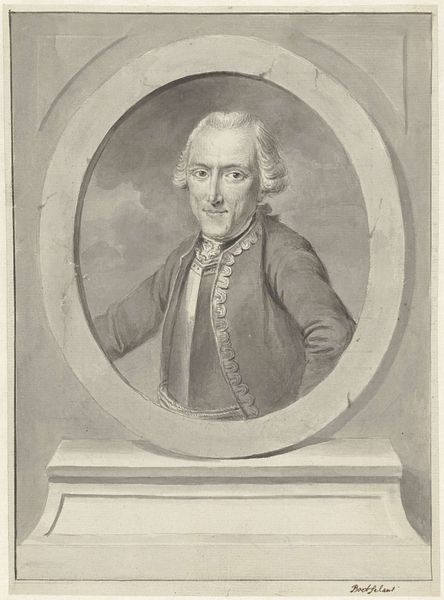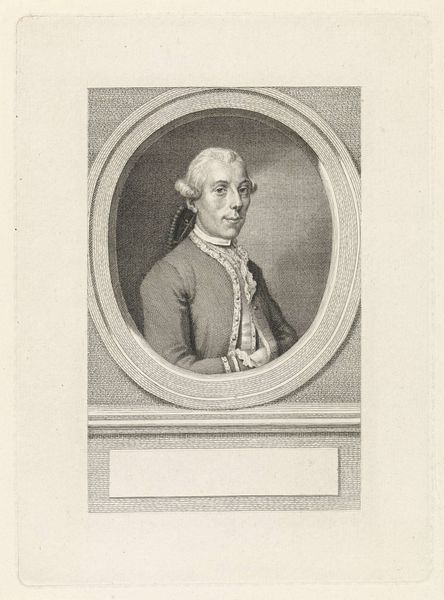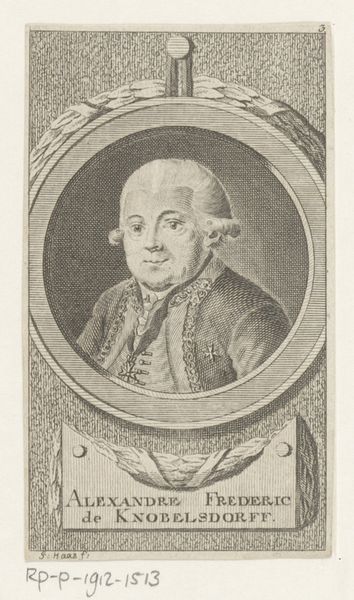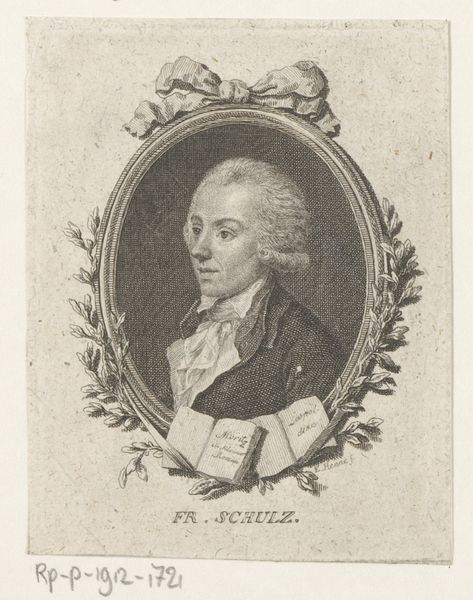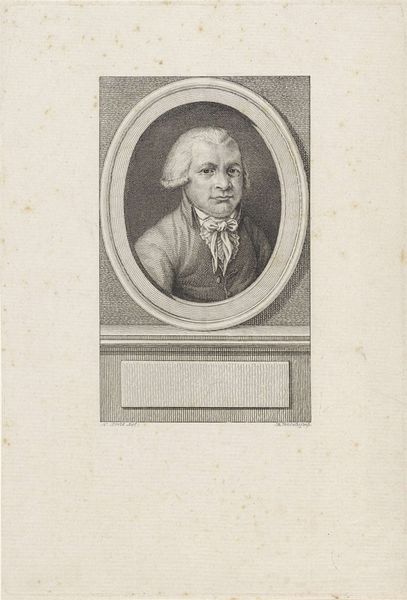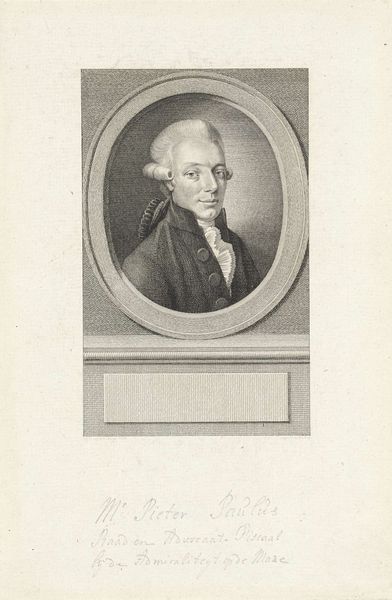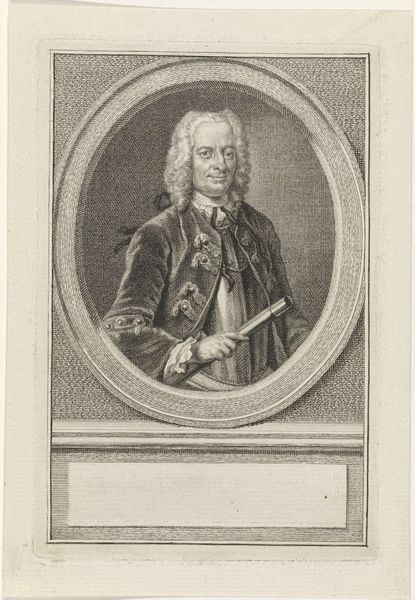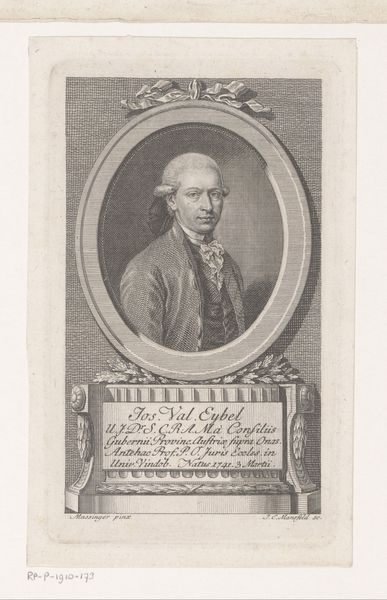
Dimensions: height 195 mm, width 133 mm
Copyright: Rijks Museum: Open Domain
Aert Schouman created this portrait of Jan van Os using etching, a printmaking technique, sometime in the 1700s. The process begins with a metal plate, often copper or zinc, which is coated with a waxy, acid-resistant material called a ground. The artist then draws through the ground with a pointed tool, exposing the metal beneath. The plate is then immersed in an acid bath, which bites into the exposed lines, creating incised marks. These lines hold the ink, allowing the image to be transferred onto paper. In this portrait, the cross-hatching creates tonality and depth, lending the image a sense of volume. The material qualities of the metal plate, the acid's bite, and the artist's hand all contribute to the final print. The labor-intensive process underscores the value placed on skilled craftsmanship during this period, at a time before images could be easily reproduced. Appreciating the materiality and making of this etching gives us insight into the social and cultural values embedded within it, moving beyond traditional notions of fine art.
Comments
No comments
Be the first to comment and join the conversation on the ultimate creative platform.

